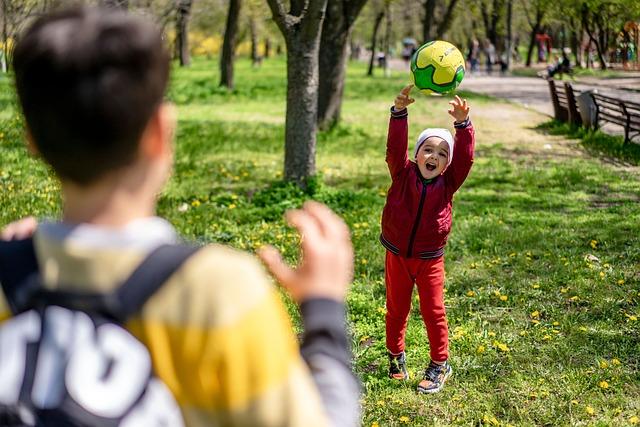In an age where screens illuminate every corner of our lives, from the comforting glow of a bedtime story on a tablet to the vibrant worlds explored in video games, managing screen time has become a delicate balancing act for families everywhere. While technology offers boundless opportunities for learning and entertainment, it also presents a challenge: how do we ensure our children reap its benefits without succumbing to its potential pitfalls? “” delves into this modern conundrum, offering insights and strategies to help parents navigate this digital landscape with grace and confidence. By fostering a harmonious relationship with technology, we can empower our children to thrive in a world where screens are a constant companion, without the accompanying struggles that often leave both parents and kids frustrated. Join us as we explore practical approaches to cultivating healthy screen habits that support both growth and peace at home.
Understanding the Roots of Screen Time Battles
At the heart of many screen time disputes lies a complex web of emotions and expectations. Children often view screens as gateways to entertainment, social connection, and even learning. For parents, however, screens can symbolize concerns about health, productivity, and real-world interactions. These differing perspectives can create a breeding ground for conflict, often escalating into battles that feel as unwinnable as they are frequent.
To navigate these turbulent waters, it’s crucial to understand the underlying motivations and fears on both sides. Parents might fear that excessive screen time could lead to issues like decreased attention spans or social isolation. Children, on the other hand, may see screen restrictions as a barrier to their social lives or a punishment. Addressing these concerns requires empathy and communication, focusing on mutual understanding rather than unilateral enforcement. Consider implementing strategies such as:
- Open Dialogue: Encourage conversations about screen time expectations and limitations.
- Shared Goals: Collaborate on setting achievable and realistic screen time limits.
- Modeling Behavior: Demonstrate balanced screen usage through personal example.
- Alternative Activities: Offer engaging offline activities to naturally reduce screen dependency.
By approaching screen time with a mindset of cooperation rather than confrontation, families can transform potential battles into opportunities for growth and connection.
Crafting a Balanced Routine for Your Child
Finding the right balance between screen time and other activities can be a challenge, but it’s essential for your child’s development. Structure and consistency are key components in establishing a routine that accommodates both digital engagement and offline activities. Begin by setting clear expectations and boundaries. Create a daily schedule that incorporates a mix of educational screen time, physical play, and creative pursuits. Consider using tools like timers or apps to help manage these periods effectively.
- Set Clear Limits: Decide on the amount of screen time that’s appropriate based on your child’s age and needs. Make sure to communicate these limits clearly and consistently.
- Encourage Offline Activities: Balance screen time with activities that foster creativity and physical movement, such as drawing, playing outside, or reading.
- Model Healthy Habits: Be a role model by demonstrating your own balanced use of technology and engaging in non-digital activities.
- Involve Your Child: Let them help plan their daily routine, giving them a sense of control and responsibility over their activities.
Integrating these strategies into your child’s daily routine can help them develop healthy habits without leading to resistance or tantrums. Remember, flexibility is crucial; adjust the routine as needed to accommodate changes in your child’s interests or needs.

Engaging Alternatives to Digital Entertainment
In a world dominated by screens, it’s refreshing to explore activities that captivate the imagination and nurture creativity. Here are some innovative alternatives to digital entertainment that can engage both young and old alike:
- Storytelling Circles: Gather family or friends for a night of storytelling. Let each participant contribute to a communal tale, or take turns narrating their own adventures. This not only sparks creativity but also strengthens communication skills.
- DIY Craft Projects: Dive into the world of crafting with materials readily available at home. Whether it’s creating homemade candles, painting rocks, or designing unique greeting cards, these projects provide a hands-on experience that’s both rewarding and relaxing.
- Nature Scavenger Hunts: Transform a simple walk into an exciting quest by organizing a scavenger hunt. Create a list of natural items to find, such as specific leaves, flowers, or rocks, and watch as enthusiasm for the outdoors blossoms.
These activities encourage connection, creativity, and a sense of accomplishment, offering a refreshing break from the digital realm.

Effective Communication Strategies for Tech-Savvy Kids
In today’s digital age, encouraging children to communicate effectively while balancing their screen time can be challenging yet achievable. One approach is to foster an environment where open dialogue is the norm. Engage your tech-savvy kids by setting aside time for family discussions about their favorite apps and games. This not only validates their interests but also provides a platform for them to express their thoughts and emotions.
- Active Listening: Show genuine interest in their digital world by asking questions and listening attentively.
- Tech-Free Zones: Establish areas or times in your home where screens are not allowed, encouraging face-to-face conversations.
- Collaborative Decision-Making: Involve them in setting boundaries for screen time, making them more likely to adhere to the rules.
- Role Modeling: Demonstrate balanced screen habits yourself, setting a precedent for them to follow.
By nurturing these communication strategies, children learn to value both digital interactions and personal connections, leading to a harmonious balance without the drama of screen-time disputes.








